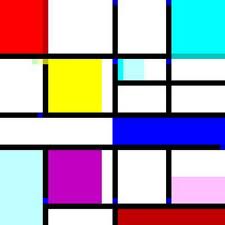1 Brainfuck
As the name , so is the craziness
It was the invention of Urban Müller, designed to realize its implementation in the smallest possible compiler, and his master-plan came into existence in 1993. Known for its extreme minimalism, and controversial name, Bf comprises of only 8 commands +-. <>, [] and is practically useless, however recently few decoders have been designed to render it useful enough.
Originally created by Chris Pressey in 1993 extremely weird because basically the language models programs to be metric spaces attached with a co-ordinate system. One could never imagine that the instruction pointer could be even used in such an unorganized manner. What’s more it has even further developed into Befunge, and there have been several standards defined such as uni-funge for uni-dimensional and so on.
In Befunge, there is no comment syntax to embed documentation in the code, the programmer simply routes the control flow around the “comment” area, so that the text in that area is never executed.
3 Chef
Designed by David Morgan-Mar in 2002 . This language is more of a cooking recipe rather than a programming language. The variables tend to be named after basic foodstuffs, the stacks are called “mixing bowls” or “baking dishes” and the instructions for manipulating them “mix”, “stir”, etc. The ingredients in a mixing bowl or baking dish are ordered “like a stack of pancakes”.
4 Piet
Programs are bitmap graphics that look like abstract art designed by David Morgan-Mar, who also created Chef. Named after geometric abstract art pioneer, Piet Mondrian; the originally intended name, Mondrian, was already taken.
There are 20 colors for which behavior is specified: 18 “colorful” colors, which are ordered by a 6-step hue cycle and a 3-step brightness cycle; and black and white, which are not ordered. When exiting a “colorful” color and entering another one, the performed procedure is determined by the number of steps of change in hue and brightness.
5 LOLCODE
This is the height ! Actually , more than being crazy it’s very funny programming language, basically designed to amuse the users with resemblance of the speech of lolcats.
6 OMGROFL
Created in 2006 by Juraj Borza. The name comes from combining the slang “words” omg and rofl. Rofl is actually one of Omgrofl’s commands. Omgrofl is not case-sensitive, thus lol is the same as LoL. You may use this to produce “nicer” code.
Variables in Omgrofl must be a form of the slang word lol, like lol, lool, loool, looool, etc.
7 Velato
This one is for the music lovers, as Velato makes use of MIDI files as the input, with each command being determined by the interval between successive notes. Intended to allow for flexibility in composition, so functional programs will not necessarily sound like random notes.
Of course, like all MIDI files, Velato programs can also be represented as sheet music. Pictured above is sheet music – which you can listen to here.
8 Shakespeare
As it sounds, the language has been deliberately tweaked to frame programs resemble the plays of Shakespeare .
It was designed by Jon Åslund and Karl Hasselström. Like Chef , it is designed to make programs appear to be something other than programs; in this case, Shakespearean plays.
The first line in a Shakespeare program is called the “title” and acts as a comment.
The “Dramatis Personae” is the section where variables are declared.
Each variable name must be the name of a character from a Shakespeare play.
A piece of code in Shakespeare is broken into “Acts”, which contain “Scenes”, in which characters (variables) interact.
Each Act and Scene is numbered with a roman numeral and serves as a GOTO label.
Hello World in Shakespeare
9 Whitespace
Designed in 2002, by Edwin Brady and Chris Morris, is an esoteric programming language that uses only whitespace characters as syntax. When it was released on April 1st, 2003, most people took it as an April Fools’ joke, which it wasn’t.
One of the most idiotic ones, which comprises of just the letter A, accompanied by commas, spaces and exclamations! It takes just the whitespaces into account, ignoring the non-whitespaces
10 Intercal
Compiler Language With No Pronounceable Acronym, INTERCAL was the end result of exceptional work by James M. Lyon and Donald R. Woods, who came up with a programming language in 1972, which was totally different from all other programming languages.
The full name of the compiler is ‘Compiler Language With No Pronounceable Acronym,’ which is, for obvious reasons, abbreviated ‘INTERCAL’. Common operations in other languages have cryptic and redundant syntax in INTERCAL.
You can’t make head or tail out of it, except the binary numbers .



